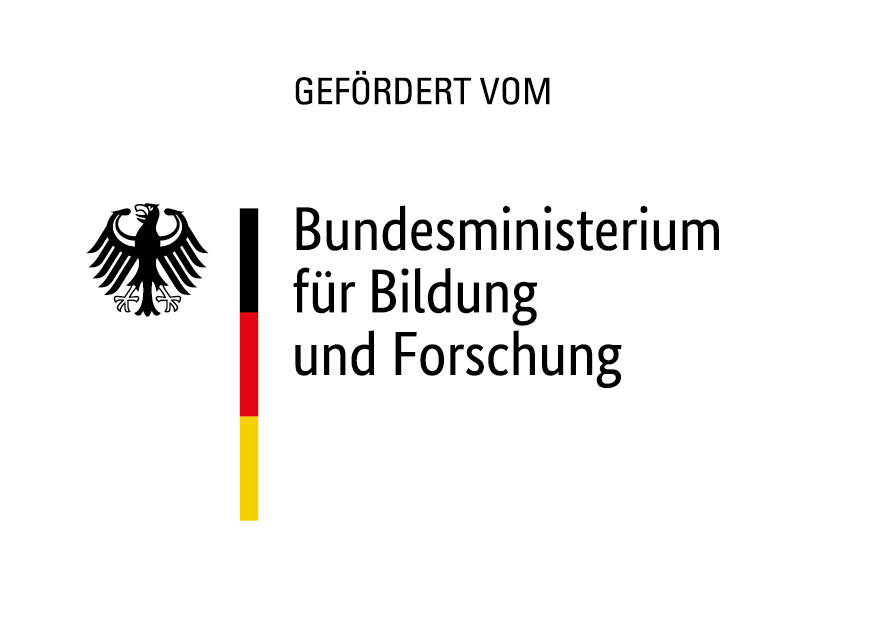
PANDEMOS
Optimization of traffic flows in times of pandemic
Project content and objectives
The Covid-19 pandemic has presented the world with enormous challenges and it must be better prepared for future pandemics. One particular challenge is maintaining mobility as a social and economic asset in our society. The influence of mobility on the pandemic, taking into account various political measures such as mouth and nose protection, regular testing on public transport or minimum distances, has not yet been sufficiently investigated. Innovative strategies for local virus containment depending on the region, choice of means of transport and traffic flows are urgently needed and must be found through simulation studies.
The aim of the “PANDEMOS” project is to develop a software framework with an interactive user interface that depicts the incidence of infection as a function of mobility. Based on current data from traffic research, social media, epidemiology and virology, the impact of political measures is examined. With the innovative model combination of transport and epidemiology and the broad database, differentiated strategies for combating the pandemic are being developed.
Project structure
The PANDEMOS project is divided into five work packages.
1. derivation of overall German transport demand at passenger level
DEMO provides a Germany-wide model of mobility behavior, which, however a) is macroscopic, i.e. has a description of mobility behavior aggregated across population groups and b) does not provide a spatially resolved representation of mobility within the traffic cells. In order to obtain a disaggregated, complete representation of the mobility of all people living in Germany, the results of the DEMO model are therefore disaggregated in the first project step.
The disaggregation of DEMO demand is based on various data. The population is first converted into individuals, whereby statistical information on socio-demographics, e.g. age, gender, employment status, possession of mobility options, etc., is used. Next, data from the OpenStreetMap project is used to distribute the population to residential buildings. This data is also used to determine the disaggregated destinations of trips. The trips made from DEMO over the course of a day and their purposes are supplemented by diaries from the “time use survey”.
The result is a disaggregated list of journeys including start and destination, purpose, time and the transport mode used. The refinement of the mapping of mobility through social media and mobile phone data in WP2 is iteratively taken into account in WP1 in order to improve the disaggregation methods.
2. social media analysis and data integration
In addition to the evaluation of traffic models and traffic demand in work package 1, data from social media, which can be queried via public APIs, will also be evaluated in this work package in order to gain an even more accurate picture of mobility in Germany. Various analysis techniques are provided in a social media monitoring tool for this purpose.
To generate a consistent and comprehensive database, machine learning and text mining techniques are used to identify location references in public social media posts (georeferencing) even if they are not explicitly stated. It must be ensured that distortions in the data, e.g. an excessive focus on individual regions or age groups, are largely avoided. This is achieved by comparing the acquired contributions with a local reference with data on population density to ensure representativeness. Voluntary data donations are also used here for validation.
The aim is to use such data both to model actual traffic movements and to derive social connections between regions that can be used to predict mobility. First, networks of people, places and posts are created from the collected social media data. These are then embedded in a geographical coordinate system and analyzed using “Spatio Social Network Analysis” and linked to other traffic data in order to gain further insights into mobility in Germany and influencing factors. The results contribute to the adaptation of traffic models (WP1) and to a more precise parameterization of simulation models (WP4).
3. web interface with visual analytics and interactive visualization
The visual evaluation of the data is a central component of the project. It should make it possible to understand the results of the simulations, enable the detection of unknown patterns and evaluate possible measures on this basis. The visualization is intended to work on several levels in order to analyze the infection dynamics, both in a national and regional context. For this purpose, several visualization techniques are used that are suitable for the different levels. At the national level, mainly choropleth maps will be used, which, combined with rough infrastructure maps, will allow the spread of infection through long-distance travel to be analyzed. At the regional level, fine-grained visualizations are implemented based on techniques developed by Krüger (2017). These techniques are adapted and expanded to include application-specific methods.
The georeferenced visualizations are supplemented by statistical analysis tools, such as parallel coordinate plots or scatterplot matrices. Automated algorithms should also support users in recognizing patterns in the data and visualizing them.
Interactive elements expand the visualizations into an application with which different scenarios can be defined, tested and analyzed. The aim is to create an interaction loop for users that allows them to define measures, start simulations based on them and analyze the results. Measures can be adapted and evaluated based on the results.
The visual analytics framework is to be implemented primarily with web technologies. Existing open source libraries are to be used for this purpose. The focus will be on visualization libraries such as D3.js and amCharts. Leaflet is used in combination with data from OpenStreetMap to implement regional visualizations.
The library developed in work package 5 can efficiently mimic the results of the models and thus provide a quick and cost-effective outlook on results.
4. epidemiological simulation models with mobility considerations
In WP 4, existing epidemiological models are to be expanded and supplemented by an explicit description of mobility and passenger transportation. The aim is to investigate and predict the effects of different forms of mobility on the incidence of infection. Both the importance of public transport as a place of infection and the importance of mobility as a whole for the spread of the pandemic are examined in scenario simulations.
As a first approximation, the infection process can be investigated in compartment models of the SEIR type. Due to their efficiency, these models are particularly suitable for the simulation of larger scales. However, mobility-specific parameters and mechanisms must be added to the model in any case, especially with regard to the risk of infection in public transport and accompanying measures such as mandatory masks or a limit on maximum occupancy.
Compared to differential equation models, agent-based models (ABM) consider a different level of detail. A model is being developed that depicts individual persons and infection processes between persons as well as associated disease progressions. Each individual person is simulated with specific characteristics such as age and activity and moves in the model between different nodes of a network that represent possible infection sites. Infection processes can thus be simulated within these nodes. This type of model allows a very detailed depiction of disease progression, individual characteristics and behavior of people as well as characteristic properties of a region. This means that interventions can also be included in comparative detail. However, the high level of detail also means a high demand for computing capacity, so agent-based models are being developed for pilot cities as a first step. In a second step, these will also be developed for the whole of Germany. As the size of the system is limiting for certain applications, an abstraction, e.g. by means of surrogate models (see WP 5), is necessary. As with the SEIR models, preliminary work can also be used for the development of the ABM. However, a representation of local public transport in the model must be newly developed and parameterized.
5. measures, optimization and artificial intelligence
Work package 5 focuses on deriving an optimized catalog of measures to maintain mobility while simultaneously reducing the dynamics of infection. To this end, this work package will develop efficient surrogate models using artificial intelligence that enable the interactive elaboration of different bundles of measures.
In a first step, possible measures to contain the infection dynamics are discussed and defined. After the explicit modeling of mobility behavior in the epidemiological models has been designed in work package 4, a mapping of these measures to the modeled mobility behavior will be designed and implemented in a further step.
Parallel to the above steps, a market analysis of available optimization tools will be carried out and an evaluation will be made of their applicability to the problems described in this project.
Based on the simulation results of the expert models developed in work package 4, surrogate models of artificial intelligence are trained. In a feedback loop of optimization and simulation, both expert and surrogate models are further refined and adapted to possible new developments.
By optimizing the two models, parameter studies are carried out so that an assessment can be made for the predefined measures. Finally, an optimized catalog of measures is generated from this and then optimized again.
Finally, the cost-efficient surrogate models will be further optimized so that they can be coupled with the web interface developed in work package 3. The connection is implemented via a REST API, which the interface can access after user action.
Project managers and partners
- Dr. Martin Kühn, German Aerospace Center (DLR)
- Alain Schengen, German Aerospace Center (DLR)
- Prof. Dr. Michael Meyer-Hermann, Helmholtz Centre for Infection Research
- Dr. Sebastian Binder, Helmholtz Centre for Infection Research
- Martin Prinz, Coac GmbH
- Research

